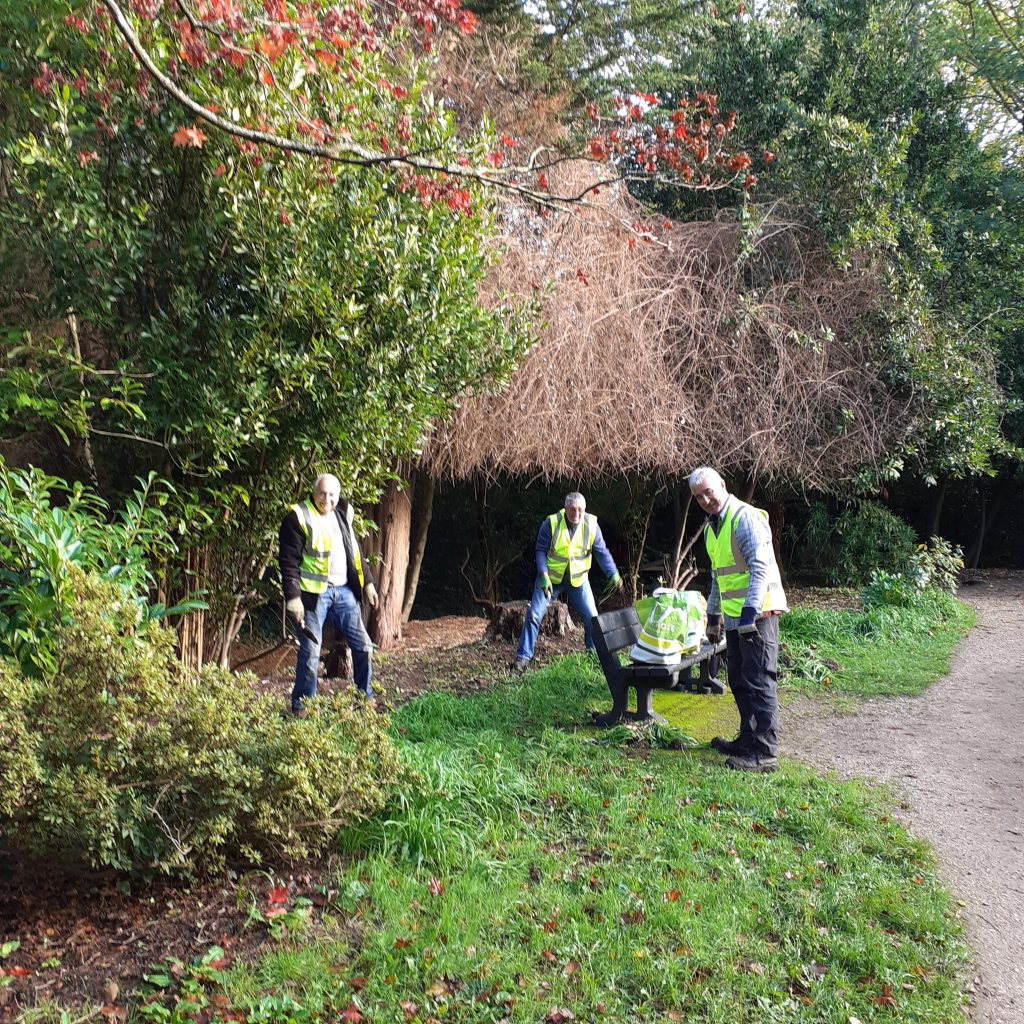There’s plenty of three cornered leek on Glen Goyle – as testified by the doggedly determined members of the regular working party:

15th December 2022 – Friends of Glen Goyle
There are different traditions as to what to call it:
I don’t mind what you call it. In Cornwall and the Isles of Scilly this plant is often called wild garlic. Those who call it this know what they mean. They know they’re talking about the onion grass, the long, thin one that smells of garlic and… how it compares to using wild garlic/ramsons (Allium ursinum)
Three-cornered leek (Allium triquetrium) goes by many local names, but only one latin one. All the local names refer to its garlicky smell; onion grass, onion weed, wild garlic, three-cornered garlic, three-cornered onion or three-cornered leek. A member of the allium family it originates from the Mediterranean, Madeira, Canary Islands and North Africa.
It was originally introduced to the UK in the 18th century and the rest is history.
All about Three Cornered Leek – Wild Walks Southwest
So, with regards to the vexed question of ‘what is a native species’, even wild food foragers will note its tendency to dominate:
An invasive species brought over to the UK from the Mediterranean, it is an offence under Schedule 9 of the Wildlife and Countryside Act in England and Wales to plant or otherwise cause to grow this species in the wild.
Three-Cornered Leek, Snowbell, Allium triquetrum
Or, as Plantlife says:
The pendent white flowers are followed by large seeds which are attractive to ants and are therefore spread around them. The plant readily escapes into the wild is found along roadsides banks and verges, hedgerows, woodland edges, field edges and on waste ground. It forms very dense colonies that can outcompete other spring flowers like primroses and violets. On some roadside verges and banks it forms dense stands for many meters. It is most common in southern and western Britain, but is on the increase and spreading further north.
Plantlife :: Three-cornered garlic
But its not just Friends of Glen Goyle who’ve had issues with the rampaging plant:
The Bramble Bank in The Byes is a strip of land that stretches from the steps by Lawn Vista to Water Lane… The land is owned by the National Trust and managed by East Devon District Council. Their policies are to promote biodiversity by protecting and enhancing living things and making wildlife corridors. The Friends of The Byes have been putting in the detail and carrying out the work.
With the brambles gone it could be seen that the bank was steep, had been a dump for rubble and was infested with invasive non-natives like Japanese knotweed, three cornered leek and Spanish bluebell. The knotweed has been professionally removed and the Friends have started to get the leek and bluebell under control. Both are pretty flowers but they stop native plants growing and insects and other creatures need the native plants.
